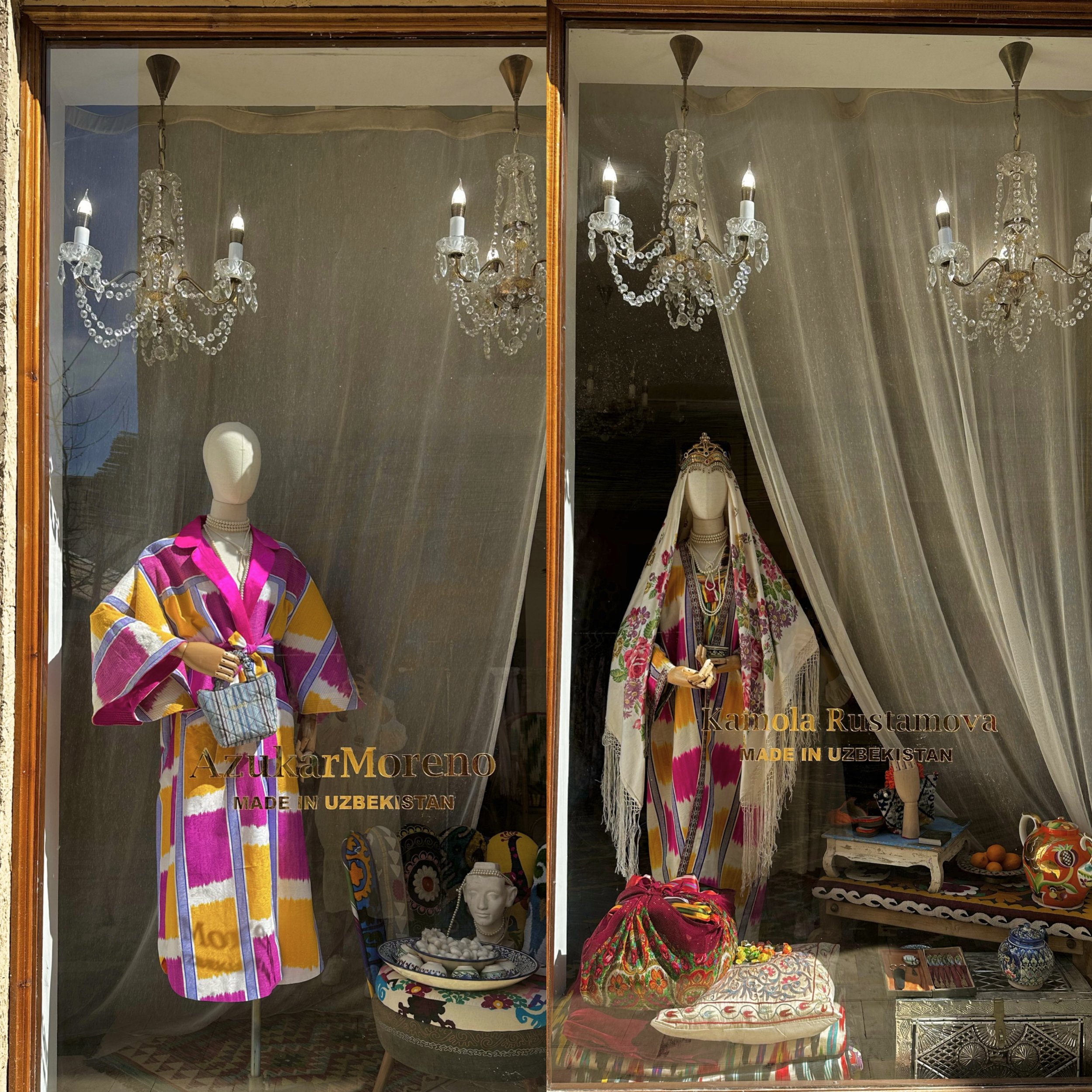The Paranja Story with Malika Fattakhova
The manager of the Azukar Moreno brand, Malika Fattakhova, recalls the history of the paranja, a garment traditionally worn by Uzbek women to cover their entire body and face
Until the 1920s, women throughout the territory of modern Uzbekistan wore a garment known as the paranja (a type of burka) that covered their body and face. The traditional attire of Uzbek women consisted of a dress, trousers and a munisak (robe). Girls wore skullcaps, while married women donned a variety of scarves. When going outside, however, women were required to throw a paranja over their clothes. It included a flap known as chachvon to hide the face completely.
The practice of wearing a veil dates as far back as ancient Mesopotamia, where women of rank wore a headscarf or veil as a sign of their status, but it became more common during Islamic times. Besides identifying a woman’s social and marital status, facial and body covers like the burka concealed the wearer from immodest looks, and in hot climates it protected her from the sun. The Central Asian paranja, too, carried regional and social information: it was quite possible to determine the age, social status and provenance of the woman hiding under it by the colour and quality of the fabric.
In more recent times, the paranja became a symbol of women’s oppression. With the advent of Soviet socialism, a campaign known as Hujum was launched in Central Asia to abolish the wearing of paranjas. It was the brainchild of the first secretary of the Central Asian Central Committee, Zelensky Isaak Abramovich. The first woman to remove her paranja in public was Tojikhon Shodieva, a young communist activist from Fergana. The campaign’s crowning moment came on 8 March 1927, when thousands of Uzbek women gathered on Registan Square in Samarkand, removed their paranjas and set them on fire in front of their angry fathers, husbands and brothers. Another 90,000 women took off their paranjas over the next few months.
The campaign against wearing the paranja continued for the next 15 years and yielded mixed results. On the one hand, it created unexpected opportunities for women; on the other hand, it often put them in a difficult position, as they were subjected to criticism, humiliation and violence by a society still steeped in patriarchal traditions.
Today, thanks to the Hujum movement, women in Uzbekistan have the opportunity to receive an education, hold positions on an equal basis with men, and enjoy freedom of speech.



